 On the outskirts of Birmingham, AL is a quaint neighborhood along the Cahaba River, a beautiful area. Across the road is a nice picnic area that leads down to the river. Here you can walk on the flat rocks when the water is low and the river not running hard. Embedded in those rocks are vestiges of the long ago past.
On the outskirts of Birmingham, AL is a quaint neighborhood along the Cahaba River, a beautiful area. Across the road is a nice picnic area that leads down to the river. Here you can walk on the flat rocks when the water is low and the river not running hard. Embedded in those rocks are vestiges of the long ago past.
The Ridge and Valley region of Alabama, where the Cahaba River begins, was formed when the African Plate collided with the North American Plate in the Paleozoic era. The valley soils consist of gravel, sand, and clay, while the ridges consist of chert and sandstone. The upper Cahaba region contains Cenozoic-era gravel, clay, and sand. It is filled with different finds from the Pennsylvanian or Carboniferous Age, often referred to as the Coal Age because of the large pure coal deposits found in the shale. They include tiny imprints of ferns to large pieces of Calamites, the extinct ancestors of modern horsetails that have a bamboo-like appearance.
|

Our first trip, the river wasn't deep, but running. | 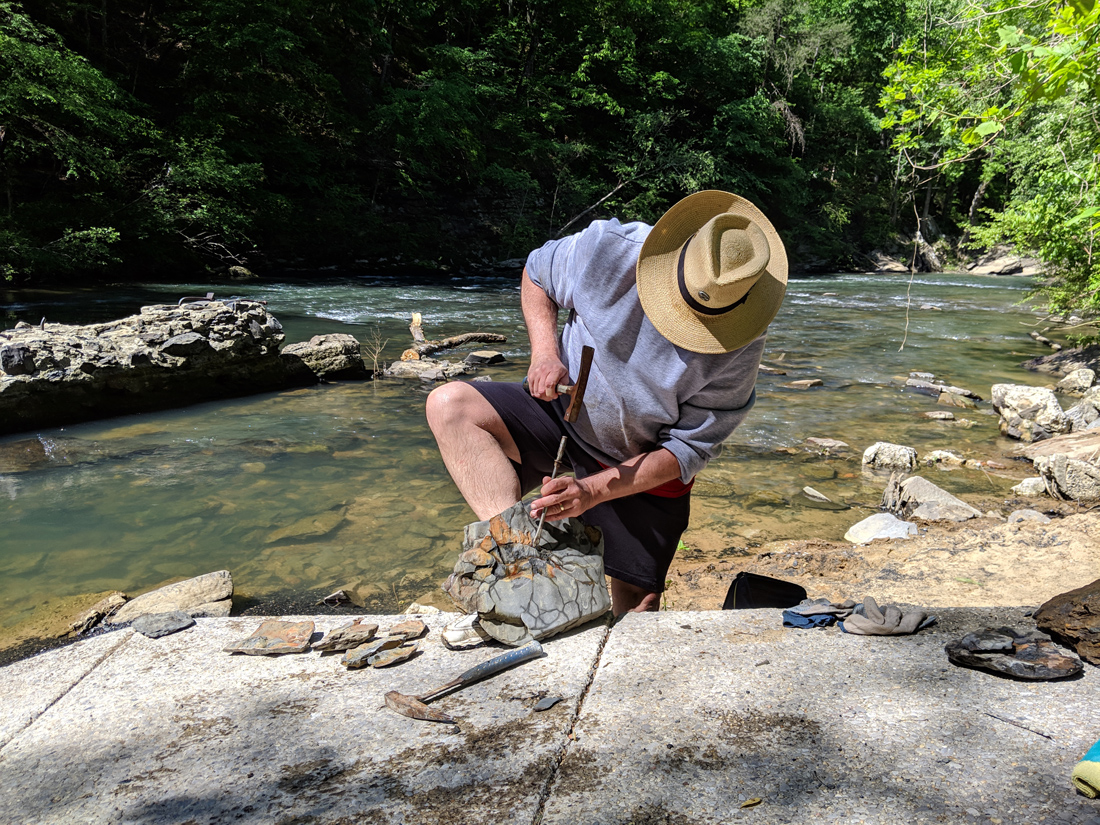
Slicing open the layered shale rocks. |

Our second trip this area was dry. |
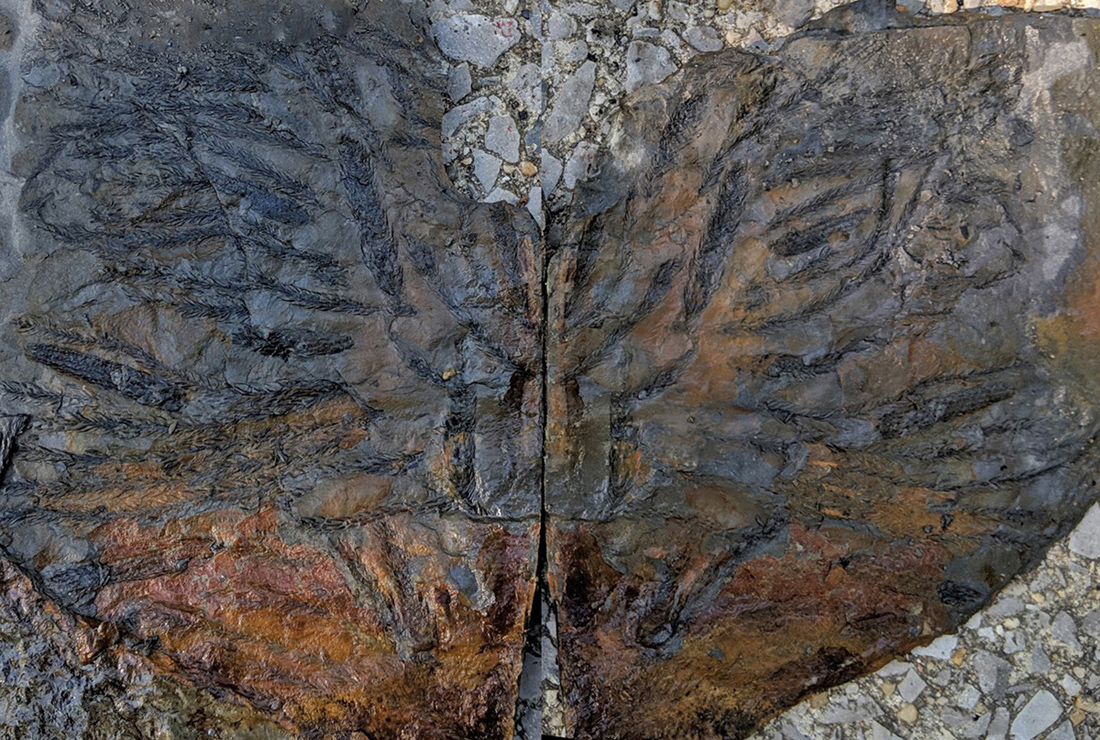
Between the layers was this lepidodendron fossil.
This fossil is about 12" wide by 8" tall. |

Close up of the lepidodendron fossil. |

Lepidodendron; Carboniferous cones are Lepidostrobus from arboreal lycopsids, are often referred to as Lepidostrobus variabilis. |

Lepidodendron; x is lepidostrobus |
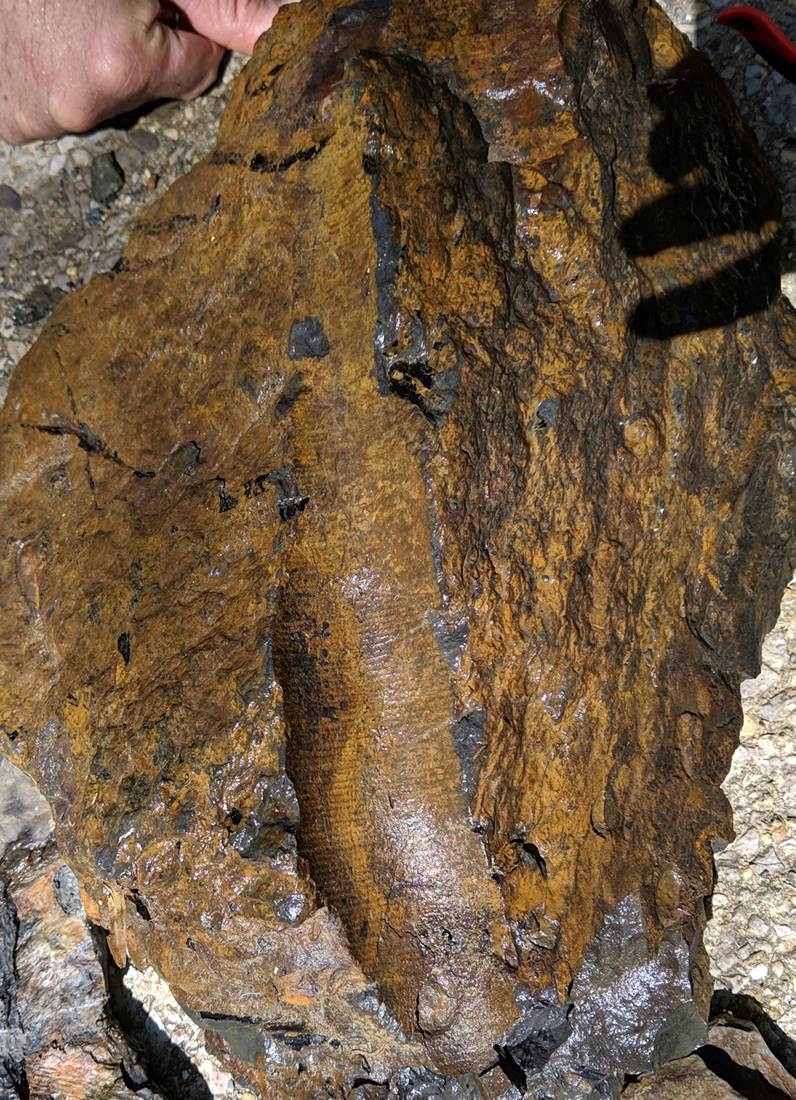
Artistia, cordaites limb core, 10" long |
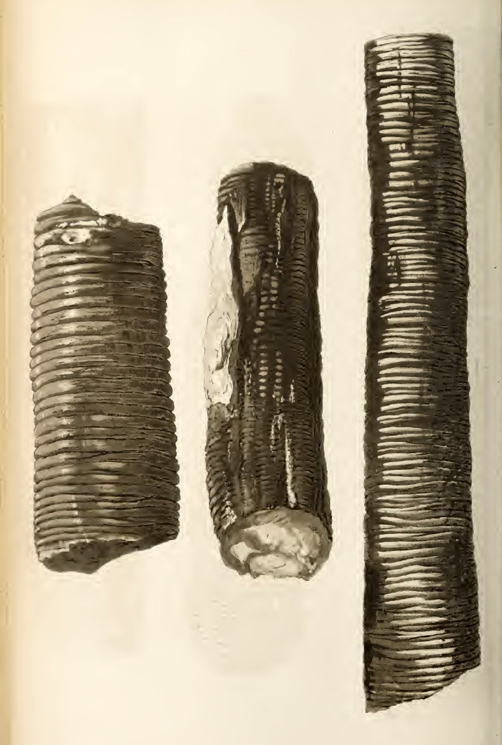
Artistia, cordaites limb cores |
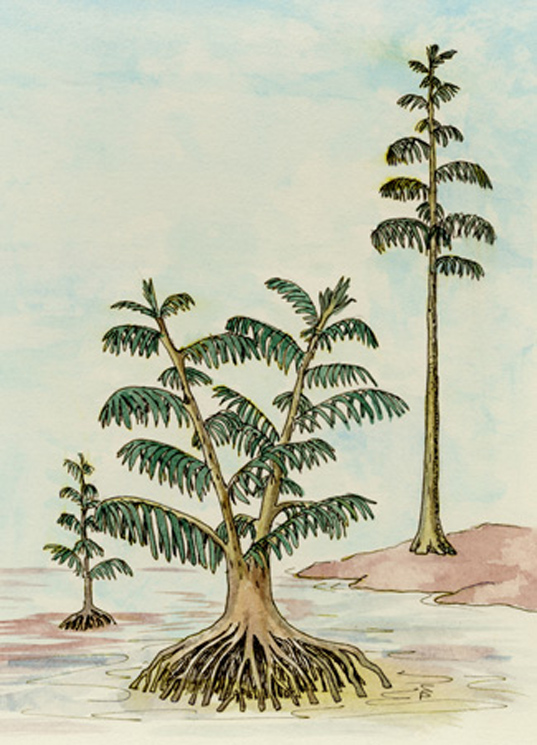
Cordaite trees |
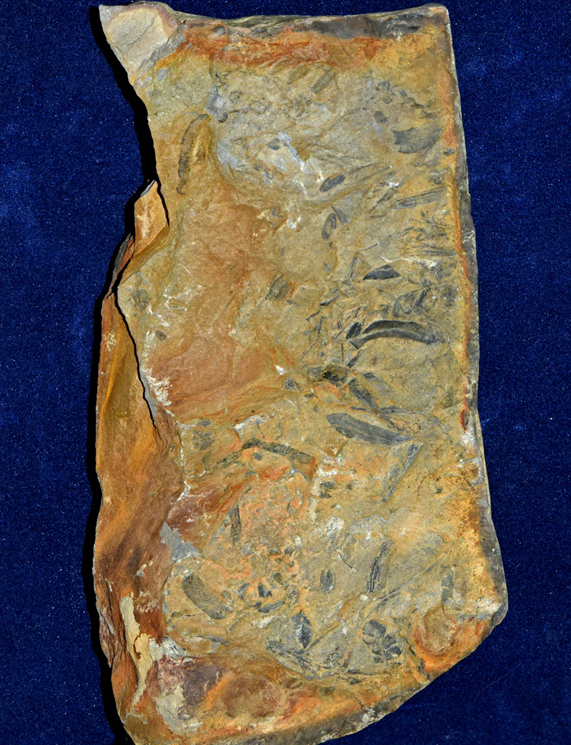
Cordaite leaves |
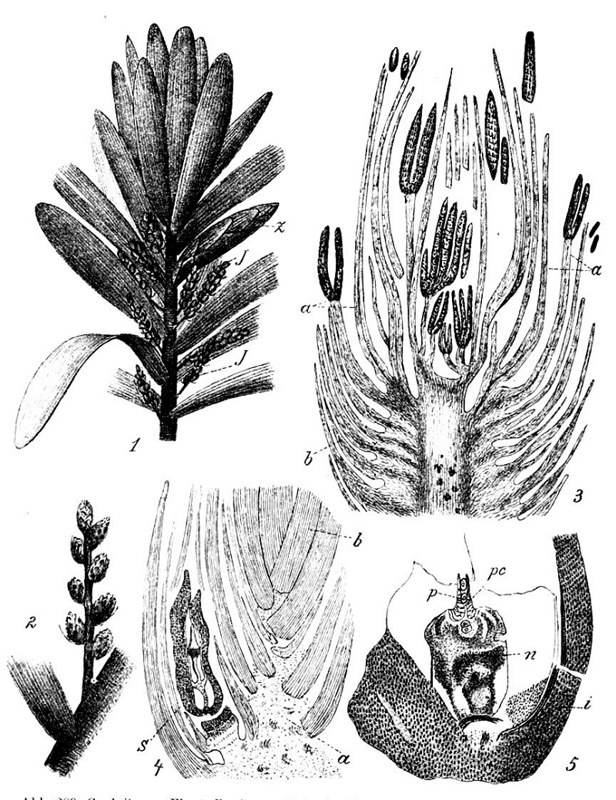
Cordaite leaves upper left |

Neuropteris |

unknown |
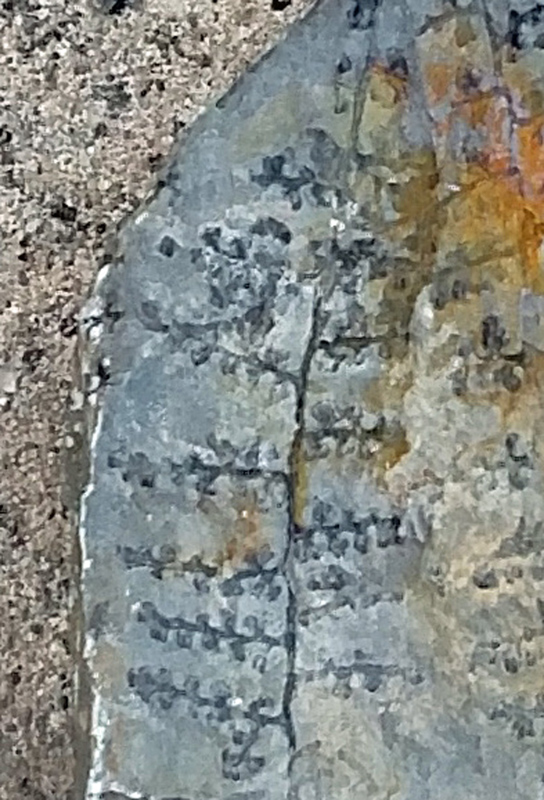
Sphenopteris or Eusphenopteris obtusiloba. |
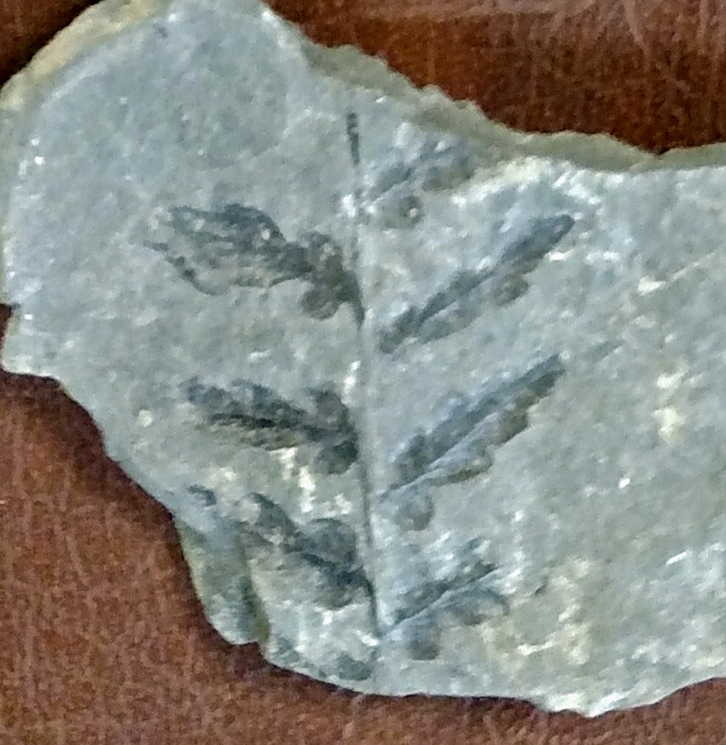
unknown |

Say Hello to my little friend... |
|